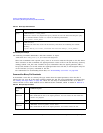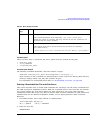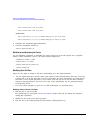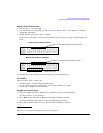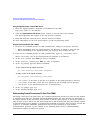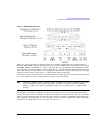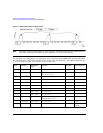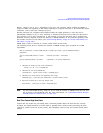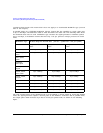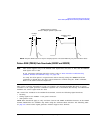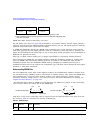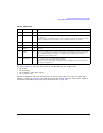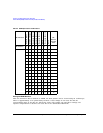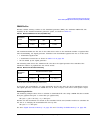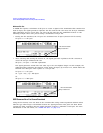
Agilent N518xA, E8663B, E44x8C, and E82x7D Signal Generators Programming Guide 307
Creating and Downloading User-Data Files
User File Data (Bit/Binary) Downloads (E4438C and E8267D)
Event 1 output is set to 0 or 1 depending on the sync out selection, which enables the EVENT 1
output at either the beginning of the frame, beginning of a specific timeslot, or at all timeslots (SCPI
command, :RADio:GSM:SOUT FRAME|SLOT|ALL).
Because timeslots are configured and enabled within the signal generator, a user file can be
individually assigned to one or more timeslots. A timeslot cannot have more than one data source
(PN sequence or user file) specified for it. The amount of user file data that can be mapped into
hardware memory depends on both the amount of PRAM available on the baseband generator, and
the number and size of each frame. (See “Determining Memory Usage for Custom and TDMA User
File Data” on page 293.)
PRAM adds 31 bits to each bit in a frame, which forms 32-bit words.
The following shows how to calculate the amount of PRAM storage space required for a GSM
superframe:
NOTE For the total PRAM memory usage, be sure to add the number of PRAM blocks that the user
file occupies to the PRAM file size. For more information, see “Calculating Volatile Memory
(PRAM) Usage for Framed Data” on page 294.
Real-Time Custom High Data Rates
Custom has two modes for processing data, serial and parallel. When the data bit-rate exceeds
50 Mbps, the signal generator processes data in parallel mode, which means processing the data
symbol by symbol versus bit by bit (serial). This capability exists in only the Custom format when
using a
Bits per superframe = normal GSM timeslot × timeslot per frame × speech multiframe(TCH) ×
superframe
size of normal GSM timeslot = 156.25
bits
timeslots per frame = 8 timeslots.
speech multiframe(TCH) = 26 frames superframe = 51 speech multiframes
1. Calculate the number of bits in the superframe:
156.25 × 8 × 26 × 51 = 1,657,500 bits
2. Calculate the size of the PRAM file:
1,657,500 bits × 4 bytes (32-bit words) = 6,630,000 bytes
3. Calculate how much memory the PRAM file will occupy
6,630,000 bytes / 1,024 bytes per PRAM block = 6,474.6 memory blocks
4. Round the quotient up to the next integer value
6,475 blocks × 1,024 bytes per block = 6,630,400 bytes




